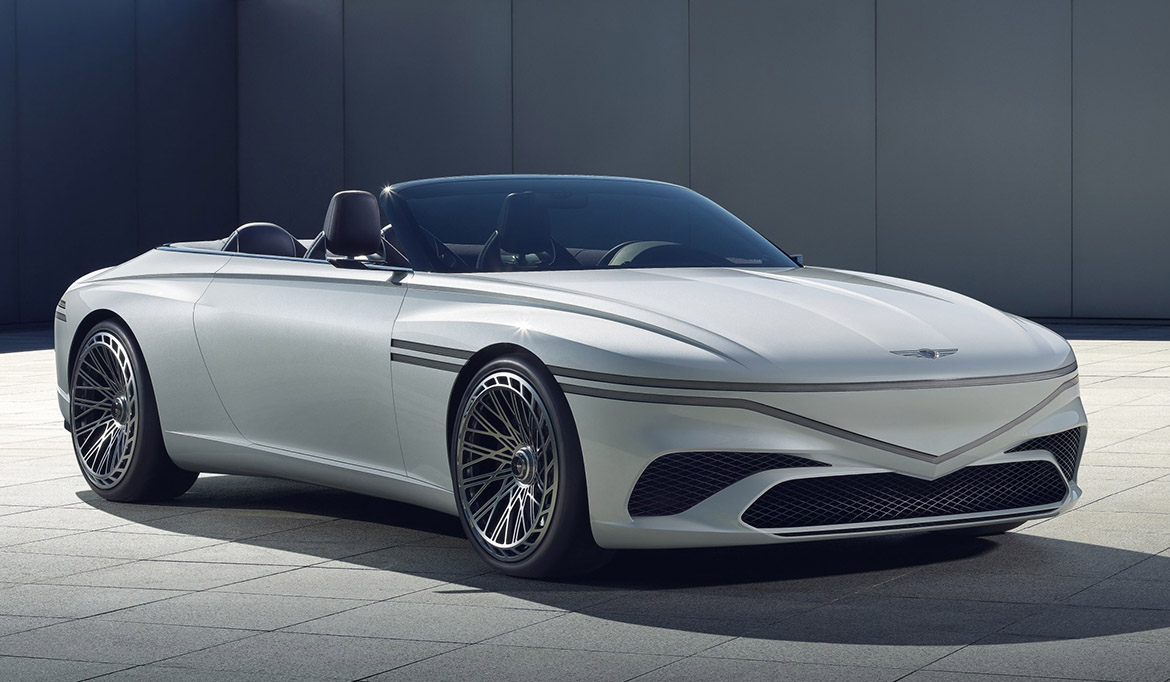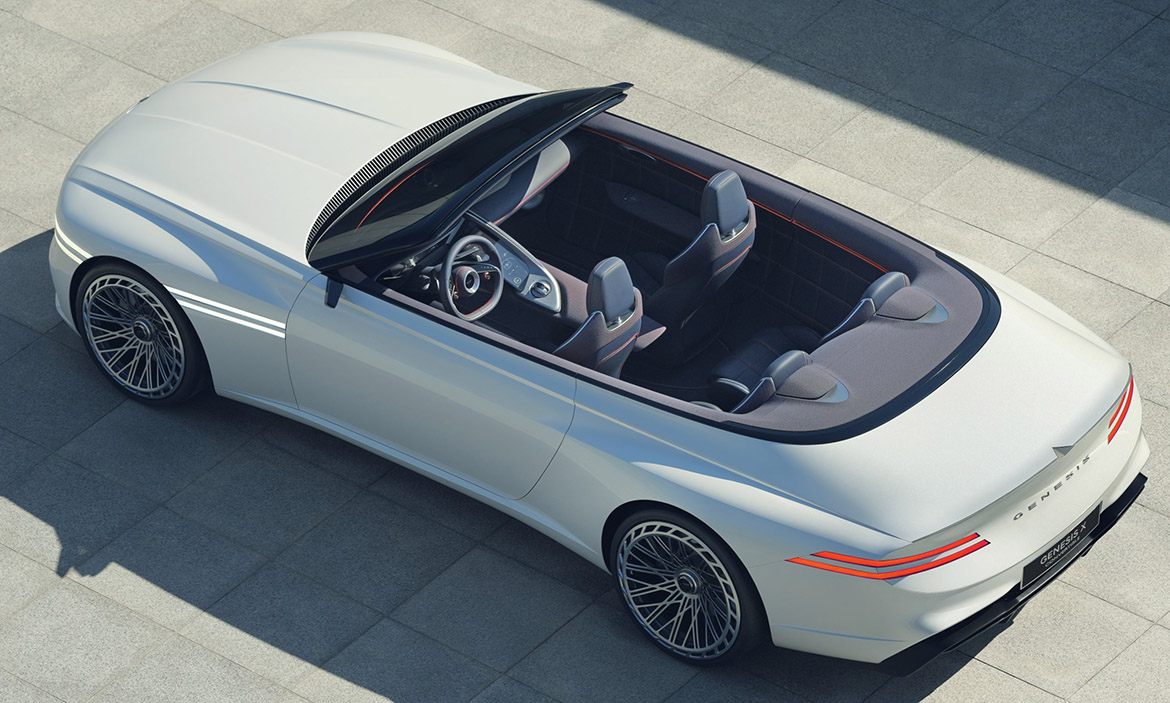An open-air, electric, four-passenger concept car. Genesis, a premium manufacturer in the Hyundai galaxy, presented the X Concept in California, and the choice of location was a natural one, given that this state ranks first in the US for electric vehicle adoption and its temperate climate allows year-round travel with the top down. “Genesis started its business by producing sedans aimed primarily at business users. As we created a new differentiated design DNA, we gradually increased the emotional appeal by applying it to SUV architecture. Now, electric powertrains have given us the perfect backdrop to enjoy nature and pushed the brand to create vehicles with even greater emotional resonance,” said Luc Donckerwolke, Chief Creative Officer of Genesis.
The lineage of the X Convertible concept can be traced back to the X Concept, a two-door grand tourer that showcased Genesis’ Athletic Elegance design language. The X Concept Speedium Coupe, the second car in the trilogy, displayed Athletic Elegance in an even more progressive way. In addition, it defined an evolution of the ‘Genesis Crest Grille’ into a long light signature to indicate electric propulsion. The long bonnet, short front overhang and long wheelbase accentuate its majestic and relaxed stance. The parabolic line contours the profile, creating a tension between the full surfaces through a horizontal beltline gently sloping backwards. The characteristic quadrangular headlamps, from which Genesis’ Two-Line graphic identity derives, are also present on the X Convertible concept, while the openings for cooling the powertrain and batteries have been moved to the lower part of the front bumper.
The rear of the X Convertible features a concave elliptical duck tail intersected by horizontal square tail lights. The continuity of the elliptical shape is interrupted and crowned by a V-shaped indentation reminiscent of the Genesis badge and wings. The car’s interior features an asymmetrical four-seat driver-centred layout, a constant theme in all recent Genesis concept cars. Its wraparound instrument panel integrates with the centre console and wraps around the cabin, emphasising not only its performance-oriented features, but also its connection to the driver. Inspired in part by traditional Korean rooftop architecture – a nod both to the brand’s origins and to the most important aspect of convertibles – the interior design features Giwa Navy and Dancheong Orange colours, giving the cabin a modern feel.













